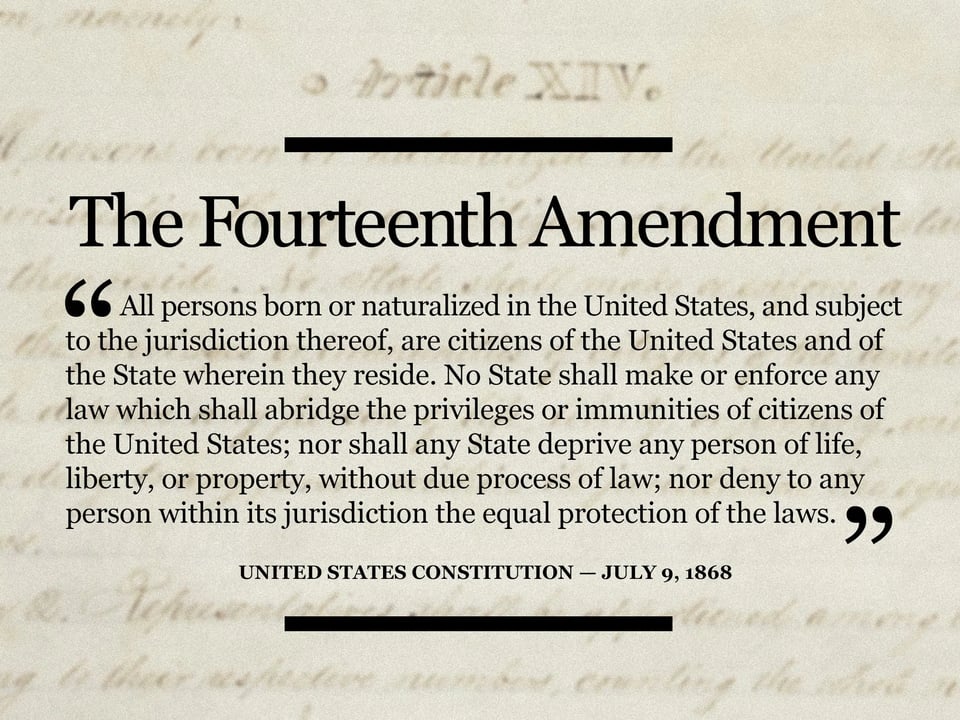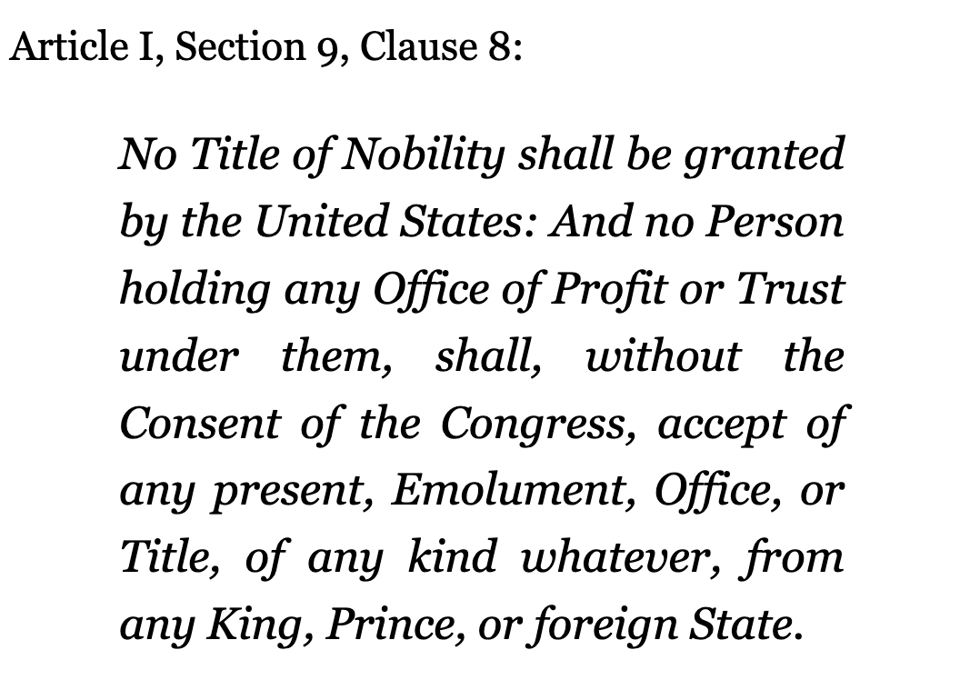Friday, May 16, 2025. Annette’s Roundup for Democracy.
Yesterday, the Supreme Court heard oral arguments on Trump’s outlandish executive order to end Birthright Citizenship and on whether or not lower court rulings should be able to create nationwide freezes of his order.
If the Trump administration gets nationwide injunctions overturned, it would mean that the parents of babies born without citizenship would each have to go to court individually to challenge the decision.

Supreme Court wrestles with limits on Trump's executive orders
The Supreme Court's conservative majority on Thursday seemed to want to rein in the spate of lower-court rulings that have frozen parts of President Trump's agenda, but struggled with the right way to do it.
The big picture: The justices heard oral arguments Thursday about whether to let Trump proceed with a plan to redefine birthright citizenship in the U.S. or leave that policy frozen while the courts hash out whether it's legal.
Catch up quick: Trump signed an executive order on his first day in office that aims to eliminate birthright citizenship for children who are born in the U.S. to parents who are not in the country legally.
The policy rests on a novel legal theory that would upend a century-long understanding of the Constitution's 14th Amendment.
Multiple federal courts blocked Trump from implementing the new policy until the courts determine whether it's legal. Multiple appeals courts left those temporary freezes in place. The Justice Department asked the Supreme Court to lift them.
Zoom out: The justices weren't debating whether Trump's policy is constitutional, but rather whether a single district court should be able to freeze an entire federal policy.
Those courts' rulings should only apply to the specific parties before them, the Justice Department argued.
Solicitor General John Sauer told the justices that nationwide injunctions are a "bipartisan problem." Legal experts from both sides of the aisle have said they're getting out of hand.
What they're saying: Several of the court's conservative justices have expressed a desire to crack down on nationwide injunctions, but they wrestled Thursday with serious questions about the implications of letting Trump's citizenship order proceed.
Liberal Justice Elena Kagan pressed Sauser on a hypothetical: What if the Supreme Court says lower courts cannot freeze the citizenship policy nationwide, but then ultimately rules that the policy is illegal?
In the time it took for the court to issue a final ruling, thousands of children would be denied citizenship, and would not be citizens of any country, she noted. And what if the Trump administration simply never asked the court to rule on the merits, she asked. In that case there would be no way to set a clear national standard for who's a citizen.
Chief Justice John Roberts, sometimes a swing vote on the court, seemed unmoved by those concerns. But they seemed to resonate with some other conservatives.
Ultimately, Thursday's questioning didn't provide an especially clear picture of how the court is likely to rule.
That decision is expected by late June.(Axios)
Could arguments about taxation curb Trump’s power grabs?
Trump's reciprocal tariffs go to trial.How Trump’s trade war could end by June.

A container ship is moored at the port of the port of New York & New Jersey in Elizabeth, New Jersey, on Monday.
The challengers say the president is violating the Constitution and hope the Court of International Trade will grant their request for a preliminary injunction before the end of the month.
President Donald Trump’s trade war could come to an abrupt halt this month — even without concessions from dozens of trading partners.
It’s up to the U.S. Court of International Trade, an obscure, New York-based federal court that decides cases related to trade and customs law. The court is hearing oral arguments Tuesday in a lawsuit challenging Trump’s use of the 1977 International Emergency Economic Powers Act to impose sweeping new tariffs last month, before suspending the highest ones on about 60 trading partners for 90 days. If the court grants the plaintiffs’ request for an emergency injunction it could upend the trade negotiations the Trump administration is now racing to complete with dozens of countries.
Trump’s new measures include a 10 percent baseline tariff on imports from around the world, additional tariffs ranging up to 50 percent on a long list of trading partners (which he has since paused) and a sky-high tariff of 145 percent on China, which the administration just announced plans to lower to a still-substantial 30 percent.
The president and his top economic officials have justified those duties by arguing the country’s soaring trade deficit with the rest of the world amounts to “a national emergency that threatens our security and our very way of life.” The Office of the U.S. Trade Representative declined Monday to comment on the litigation.
The tariffs’ challengers say Trump is violating the Constitution and hope the Court of International Trade will grant their request for a preliminary injunction before the end of the month.
That’s vital because many businesses may not survive if the tariffs remain in place while the case is litigated potentially all the way to the Supreme Court, said Jeffrey Schwab, senior counsel at the Liberty Justice Center, a conservative constitutional rights group representing VOS Selections, a New York-based wine and spirits company, and other small businesses suing over Trump’s tariffs.
An injunction would also threaten Trump’s efforts to use the threat of further country-specific “reciprocal” tariffs to negotiate new trade deals with dozens of countries. He announced the first of those agreements Thursday with the U.K., although many details remain to be worked out. His team also negotiated an agreement with China to deescalate tariffs and established a bilateral mechanism to try to tackle long-standing trade irritants.
Trump also cited a national emergency over migrants and fentanyl crossing the borders to justify a previous round of tariffs on China as well as 25 percent tariffs on Canada and Mexico, which have largely been suspended. The VOS case, however, only challenges the reciprocal tariffs that Trump announced on April 2.
The Coalition for a Prosperous America, a group representing manufacturers who favor import protection, has praised Trump’s decision to use the emergency law to enact his trade agenda, which it called “a bold and long-overdue reset of the global trade system.”
But critics such as former Sen. John Danforth (R-Mo.) contend Trump is using a flimsy excuse to usurp tax and trade powers that the Founding Fathers gave to Congress.
“It really is the biggest issue that’s been before our country ever since its founding,” Danforth said in an interview. “It has to do with the concentration of power and the idea that James Madison had of trying to spread power out in various parts of government.”
Danforth, along with fellow former GOP Sens. George Allen of Virginia and Chuck Hagel of Nebraska and others including former Attorney General Michael Mukasey, have filed an amicus brief in the case arguing against Trump’s action and urging the CIT to grant a preliminary injunction that would bar the administration from collecting the duties while the cases proceed.
“From the founding of the Republic, the power to impose tariffs — like the power to levy taxes — has belonged exclusively to Congress,” the brief reads. “This is no formality. This nation was born of the slogan ‘No taxation without representation,’ which means that the authority to tax, raise revenue and shape the public’s economic obligations must rest with the people’s elected representatives.”
“The argument in our brief … just gets right to the heart of the matter,” Danforth elaborated. “It has nothing to do with the advisability of tariffs or some statutory issue. It’s constitutional. It’s ‘Can the president expropriate [from Congress] the power to tax?,’ but I’d also say the power to control foreign commerce.”
Allen, who also was governor of Virginia from 1994 to 1998, emphasized he wholeheartedly supports Trump’s energy, border security and deregulatory efforts but draws the line at allowing the president to unilaterally impose “import taxes.”
“This is a case to preserve and honor the clear, well-reasoned constitutional principle that taxation should be determined by Congress,” Allen said. “My position is based on the conscience of a conservative. I’m taking a stand for this significant constitutional protection for free people and free enterprise, rather than personalities or hypocritical situational principles.”
Schwab, the lead lawyer in the VOS case at the CIT on Tuesday, said they are making a number of arguments they think the court will find convincing.
Fundamentally, “we don’t think IEEPA authorizes the president to issue tariffs or impose tariffs at all,” Schwab said, a point many opponents make since no previous president has used the legislation that way.
“But even if the statute did allow tariffs, it’s not clear that it would allow the tariffs that he is imposing” since they are so broad-based and not in response to a specific event or international development, Schwab added.
Plaintiffs also challenge Trump’s assertion that the “large and persistent annual trade deficit in goods” constitutes a national emergency that justifies imposing tariffs since the United States has run a trade deficit for 50 years. That gave Congress ample time to take action if lawmakers felt it was necessary, Schwab said.
They also raise a couple of more technical legal arguments, one known as the “major questions doctrine,” which requires a clear statutory delegation of power from Congress when an executive action exceeds an undefined threshold of “economic and political significance,” as plaintiffs contend that Trump’s tariffs clearly do.
A somewhat related argument involves the “nondelegation doctrine,” which says Congress can’t delegate authority to the executive branch without imposing some sort of restriction on it.
“Here, essentially what the Trump administration is saying is they have the power to tariff without any kind of oversight at all and he can do it at whatever rate he wants, whenever he wants,” Schwab said. “We think if that’s how the court would interpret [IEEPA, they would decide] that’s unconstitutional.”
In its own brief, the Justice Department relies heavily on a 50-year-old decision from an appeals court that permitted then-President Richard Nixon to impose a broad tariff under analogous language in the Trading With the Enemy Act, a predecessor to IEEPA.
Since then, courts have been more reluctant to read broad grants of authority in arguably ambiguous language. But Thomas Beline, a partner at Cassidy Levy Kent, said he believed the CIT might accept many of the government’s arguments.
“One of the things that I come back to with IEEPA is that there’s no prohibition in the law that says the president cannot use this authority for this purpose. Rather, it’s a fairly lengthy list of things that the president can do and it’s fairly broad,” Beline said.
In addition, Congress retains the power to end a national emergency declared by the president if it thinks that’s appropriate. That gives the court the opportunity to say “that’s what Congress has determined to be the right balance of powers,” Beline said.
Schwab said he thought the most “shocking” element of the Justice Department’s argument was its assertion that Trump’s actions fall under the “political question doctrine,” meaning they are not even subject to judicial review.
“Obviously, if the president can just declare a national emergency whenever he wants, without any court oversight, then the president effectively has authoritarian control,” Schwab said, even if the Justice Department did not intend to go that far with its argument.
Both former senators expressed disappointment that only a few Republicans have joined Democrats in efforts to reassert congressional authority over trade.
“I would like to see members of Congress get off their haunches and stand up for their prerogatives. Because this is clear in the Constitution. This is Article I, Section 8,” Allen said.
If Congress gives up a key power like controlling taxation, “why be in Congress?,” Danforth said. “What could they really do other than get themselves on the evening news?” (Politico)

One more thing.
Feel free to ask your Congressional Reps, “if Congress gives up a key power like controlling taxation, why be in Congress?”
About this too!👇
Trump”s “big, beautiful bill” buries a threat to free speech on page 380.
The Republican reconciliation legislation — which President Trump refers to as his "big, beautiful bill" — is winding its way through Congress. Trump is right about one thing: it's big. The tax and spending legislation, which is exempt from the filibuster and can therefore be passed without any Democratic votes, is 389 pages.
Tucked away on page 380 is a provision that would give the Trump administration a powerful new tool to silence dissent.
The provision would grant the Treasury Secretary the power to terminate the tax-exempt status of any nonprofit group they deem a "terrorist supporting organization." A "terrorist supporting organization" is any nonprofit that provides "material support" to a designated terrorist group. The term "material support" is broadly defined, and includes "any service," "expert advice," or "personnel" — regardless of whether that support is connected to violent acts. Nor is there any standard of evidence regarding what kind of information the Treasury Secretary can consider when deciding whether a nonprofit provided "material support."
The Treasury Secretary only needs to notify the nonprofit of the impending designation. They can decline to describe the "material support" the nonprofit allegedly provided if the Treasury Secretary decides "disclosure of such description would be inconsistent with national security or law enforcement interests."
The nonprofit would have 90 days to respond to the Treasury Secretary or challenge the designation in court. But it shifts the burden of proof onto the nonprofit to establish its innocence.
A similar provision passed the House as a standalone bill in November 2024 on a 219-184 vote. 15 Democrats and all but one Republican supported the bill, largely based on allegations that nonprofit groups were supporting Hamas after the October 7 attacks on Israel.
But the nonprofit world believed the legislation was overly broad and ripe for abuse. David L. Thompson, acting CEO of the National Council of Nonprofits, warned that the legislation "could be used to target nonprofits that provide humanitarian support in areas where it is difficult to determine who is or isn’t a terrorist."
In a statement opposing the legislation, the National Council of Nonprofits, the Council on Foundations, and United Philanthropy Forum noted that, even if a nonprofit avoided a permanent designation, "designees would risk irreparable damage to their operations and reputation."
It is not hard to imagine this new power being abused by Trump. In his first term, for example, Trump called "Antifa," a loose coalition of anti-fascists, a terrorist group, and conflated them with the Black Lives Matter movement. Under this proposed new authority, the Treasury Secretary could then theoretically designate any nonprofit that assists with a Black Lives Matter protest as a "terrorist supporting organization." Or Trump could claim that a private university that failed to crack down on protests of Israel's military campaign in Palestine was providing "material support" to Hamas and, therefore, could be summarily stripped of its nonprofit status.
Earlier this year, Trump said publicly that he was exploring ways to strip the nonprofit status of "environmental groups and specifically the ethics watchdog organization Citizens for Responsibility and Ethics in Washington, or CREW."
There are, of course, instances where nonprofits have provided meaningful support to terrorist groups. But there are existing legal mechanisms to revoke a nonprofit's tax-exempt status in those cases.
Supporting terrorism is already illegal
It is illegal for anyone in the U.S. — including nonprofit organizations — to provide material support to terrorist organizations under the Antiterrorism and Effective Death Penalty Act of 1996. And the IRS can revoke the tax-exempt status of a nonprofit which engages in illegal activity.
But the IRS cannot simply claim that a nonprofit has done something to violate the law and immediately revoke their tax-exempt status without notice. Instead, any question about tax-exempt eligibility must be addressed through an IRS audit. IRS auditors will investigate the forms submitted by the nonprofit and can examine their correspondence or send auditors to investigate the nonprofit in person.
If the IRS finds evidence that a nonprofit is in violation of the terms of its tax-exempt status, the IRS can allow it to keep its status while mandating operational changes or propose revocation. If the IRS revokes a nonprofit’s tax-exempt status, the nonprofit has 90 days to seek a declaratory judgement from a court about its tax-exempt status. If the court also finds that its tax-exempt status should be revoked, the nonprofit can appeal that decision in a higher court.
This process is lengthy, but it allows nonprofits a chance to defend themselves and requires that the IRS presents strong evidence for revoking tax exempt status — a process that is eliminated by the reconciliation bill.
The bipartisan opposition
Turning tax-exempt status into a political weapon for the executive branch has drawn opposition from a variety of directions.
In November 2024, when the standalone bill was up for a vote, the ACLU said that it would create “a high risk of politicized and discriminatory enforcement” and that “the executive branch could use this authority to target its political opponents and use the fear of crippling legal fees, the stigma of the designation, and donors fleeing controversy to stifle dissent and chill speech and advocacy.”
Reason, a libertarian media outlet, published a piece last year saying the provision would grant the executive branch "unlimited power to destroy nonprofits." The outlet warned that it would allow the Treasury Department to target nonprofits based on "murky innuendo" and could easily be misused by future Democratic presidents to target right-wing groups.
When the November vote took place, Thomas Massie, a Tea Party conservative representative from Kentucky, broke with his party to vote against it. Jamie Raskin (D-MD), a former constitutional law professor, called the bill a “werewolf in sheep's clothing” and said it would "capsize" the right to due process. (Judd Legum and Noel Sims, Substack).
Or this! 👇
🚨 Susie Wiles and Kash Patel were both on Qatar’s payroll too.
— Spencer Hakimian (@SpencerHakimian) May 15, 2025
More encouraging discoveries! pic.twitter.com/WTGjOPKqxF
Science continues despite Donald J. Trump.
Harvard joins colleges moving to self-fund some research to offset federal funding cuts.
WASHINGTON (AP) — Harvard University is putting up $250 million of its own money to continue research efforts amid a federal funding freeze imposed by the Trump administration, but the school’s president warns of “difficult decisions and sacrifices” to come.
The university joins a growing number of colleges moving to self-fund research as a way to compensate for at least some of the money lost to federal funding cuts.
Johns Hopkins University has started offering grants of up to $150,000 a year to faculty facing “unexpected federal research funding disruptions.” Northwestern University said it’s covering the cost of research projects that received stop-work orders from the federal government in April.
In a campus message Wednesday, Harvard President Alan Garber laid out a plan to maintain some research operations affected by the university's loss of more than $2.6 billion in grants. Harvard has been fighting the government in court over the cuts.
Harvard’s plan will redirect $250 million as an initial stopgap for the coming year while officials explore other options, Garber wrote. He called it a transition period for critical research programs, noting the Ivy League school “cannot absorb the entire cost of the suspended or canceled federal funds.”
In light of the school's financial challenges, Garber will take a voluntary 25% pay cut during the upcoming fiscal year, a Harvard spokesperson said. Garber’s current salary has not been made public, but Harvard presidents in the past have earned more than $1 million annually, the Harvard Crimson student newspaper reported.
The oldest and wealthiest university in the nation, Harvard has been hit hardest by the Trump administration's use of federal funding cuts for political leverage. Harvard is the first school to openly defy the White House's demands to overhaul campus policies around protests, admissions, hiring and more.
The Trump administration frames it as an effort to root out antisemitism on campus. In a series of escalating sanctions, the government has said Harvard is no longer eligible to receive new research grants until it negotiates an end to the impasse. Trump has said he wants to strip the university of its tax-exempt status.
Garber’s message did not indicate where it will pull the $250 million from.
Harvard has a $53 billion endowment and draws about 5% of its annual investment earnings to help cover campus operations. The school could increase that drawdown, but much of the endowment is made up of restricted funding that can only be used for purposes designated by donors. Last month, the school separately made plans to borrow $750 million.
To make up for the loss in federal funding, Education Secretary Linda McMahon this month suggested Harvard rely on “its colossal endowment” and raise money from wealthy alumni.
In his message, Garber said the sanctions have stopped lifesaving research and in some cases lost years of work. He said the university is committed to supporting its researchers.
“While there will undoubtedly be difficult decisions and sacrifices ahead, we know that, together, we will chart a path forward to sustain and advance Harvard’s vital research mission,” Garber wrote in his message.
The Trump administration's pressure campaign is forcing budget cuts on some campuses. Columbia University said it will be laying off nearly 180 employees as a result of the federal government’s $400 million in cuts at the school.
Earlier Wednesday, dozens of higher education organizations issued a joint statement against the Trump administration’s attacks on prestigious universities, calling on the government to “reforge” its ties with academia.
The statement from more than 50 groups said the nation suffers when research grants are “held hostage for political reasons and without due process.” It said all Americans benefit from the technology and medical advances produced through the government’s partnership with colleges.
The groups implore the government to respect colleges’ autonomy over their campuses. The signers include the American Council on Education, which represents hundreds of university presidents. (Associated Press).
Baby Is Healed With World’s First Personalized Gene-Editing Treatment
The technique used on a 9½-month-old boy with a rare condition has the potential to help people with thousands of other uncommon genetic diseases.

KJ Muldoon was born with a rare genetic disorder, CPS1 deficiency, that affects just one in 1.3 million babies.
Something was very wrong with Kyle and Nicole Muldoon’s baby.
The doctors speculated. Maybe it was meningitis? Maybe sepsis?
They got an answer when KJ was only a week old. He had a rare genetic disorder, CPS1 deficiency, that affects just one in 1.3 million babies. If he survived, he would have severe mental and developmental delays and would eventually need a liver transplant. But half of all babies with the disorder die in the first week of life.
Doctors at Children’s Hospital of Philadelphia offered the Muldoons comfort care for their baby, a chance to forgo aggressive treatments in the face of a grim prognosis.
“We loved him, and we didn’t want him to be suffering,” Ms. Muldoon said. But she and her husband decided to give KJ a chance.
Instead, KJ has made medical history. The baby, now 9 ½ months old, became the first patient of any age to have a custom gene-editing treatment, according to his doctors. He received an infusion made just for him and designed to fix his precise mutation.
The investigators who led the effort to save KJ are presenting their work on Thursday at the annual meeting of the American Society of Cell & Gene Therapy, and are also publishing it in the New England Journal of Medicine.
The implications of the treatment go far beyond treating KJ, said Dr. Peter Marks, who was the Food and Drug Administration official overseeing gene-therapy regulation until he recently resigned over disagreements with Robert F. Kennedy Jr., the secretary of health and human services. More than 30 million people in the United States have one of more than 7,000 rare genetic diseases. Most are so rare that no company is willing to spend years developing a gene therapy that so few people would need.
But KJ’s treatment — which built on decades of federally funded research — offers a new path for companies to develop personalized treatments without going through years of expensive development and testing.
Illnesses like KJ’s are the result of a single mutation — an incorrect DNA letter among the three billion in the human genome. Correcting it requires pinpoint targeting in an approach called base editing.
To accomplish that feat, the treatment is wrapped in fatty lipid molecules to protect it from degradation in the blood on its way to the liver, where the edit will be made. Inside the lipids are instructions that command the cells to produce an enzyme that edits the gene. They also carry a molecular GPS — CRISPR — which was altered to crawl along a person’s DNA until it finds the exact DNA letter that needs to be changed.
While KJ’s treatment was customized so CRISPR found just his mutation, the same sort of method could be adapted and used over and over again to fix mutations in other places on a person’s DNA. Only the CRISPR instructions leading the editor to the spot on the DNA with the mutation would need to be changed. Treatments would be cheaper, “by an order of magnitude at least,” Dr. Marks said.
The method, said Dr. Marks, who wrote an editorial accompanying the research paper, “is, to me, one of the most potentially transformational technologies out there.”
It eventually could also be used for more common genetic disorders like sickle cell disease, cystic fibrosis, Huntington’s disease and muscular dystrophy.
And, he said, it “could really transform health care.”
The story of KJ’s bespoke gene-editing treatment began on the evening of Aug. 8, when Dr. Kiran Musunuru, a gene-editing researcher at the University of Pennsylvania got an email from Dr. Rebecca Ahrens-Nicklas at the Children’s Hospital of Philadelphia. A baby had been born, and genetic testing showed he had CPS1 deficiency.
Could he save the baby?
Dr. Musunuru had begun investigating the use of gene editing for fairly common gene mutations.
Developing a gene editor to treat patients is a deliberate process that can take years. But KJ did not have years to wait — perhaps as few as six months before a mounting risk of severe brain damage or death.
“At this point, the clock starts in my mind,” Dr. Musunuru said. “This is real life. This is not hypothetical.”
KJ’s disease is caused by an inability to rid the body of ammonia, a byproduct of protein metabolism. Ammonia builds up in the blood and crosses into the brain. His doctors put him on a diet that severely restricted protein — just enough for him to grow. He also had a medicine, glycerol phenylbutyrate, that helped remove the ammonia in his blood. But he still was at high risk for brain injury or death. Any illness or infection could make his ammonia levels soar and cause irreversible damage to his brain.
KJ lived at the hospital under 24-hour care.
Building a gene-editing system for the Muldoons’ baby and testing it was not easy.
“There was a lot of shooting from the hip,” Dr. Musunuru said.

Dr. Kiran Musunuru, a gene-editing researcher at the University of Pennsylvania, left, and Dr. Rebecca Ahrens-Nicklas at the Children’s Hospital of Philadelphia.
He began working with Fyodor Urnov at the University of California, Berkeley, who made sure there were no unexpected and deleterious gene edits elsewhere in the DNA. Dr. Urnov is a part of an academic collaboration with Danaher Corporation, a company capable of producing the gene editor for KJ at a standard that would allow it to be used in a patient.
Danaher in turn collaborated with two other companies it owned, two additional biotechnology firms and another research institute, said Sadik Kassim, its chief technology officer for genomic medicines.
“At every step of the process, we were always expecting someone to say, ‘No, sorry,’” Dr. Kassim said. “And that would be the end of the story.” But his fears were unfounded. Danaher and the other companies charged only for the raw materials to make the drug, he added.
The F.D.A. also smoothed regulatory approval of the treatment, Dr. Ahrens-Nicklas said.
Dozens of researchers put all else aside for months.
In Berkeley, Dr. Urnov said, “scientists burned a vat of midnight oil on this the size of San Francisco Bay.” He added that “such speed to producing a clinic-grade CRISPR for a genetic disease has no precedent in our field. Not even close.”
David Liu of Harvard, whose lab invented the gene-editing method used to fix KJ’s mutation, said the speed was “astounding.”
“These steps traditionally take the better part of a decade, if not longer,” he said.
Only when the gene-editing solution was in hand and the F.D.A. approved the researchers’ work did Dr. Ahrens-Nicklas approach KJ’s parents.
“One of the most terrifying moments was when I walked into the room and said, ‘I don’t know if it will work but I promise I will do everything I can to make sure it is safe,’” she said.
On the morning of Feb. 25, KJ received the first infusion, a very low dose because no one knew how the baby would respond. He was in his room, in the crib where he had lived his entire life. He was 6 months old and in the seventh percentile for his weight.
Dr. Musunuru monitored the two-hour infusion, feeling, he said, “both excited and terrified.”
KJ slept through it.
Within two weeks, KJ was able to eat as much protein as a healthy baby. But he still needed the medication to remove the ammonia from his blood — a sign that the gene editor had not yet corrected the DNA in every affected cell.
The doctors gave him a second dose 22 days later.

KJ is now well enough for the team to start planning to discharge him from the hospital and live at home, and he is meeting developmental milestones....Children's Hospital of Philadelphia.
They were able to halve the medication dose. He got a few viral illnesses in that time, which normally would have triggered terrifying surges in his ammonia levels. But, Dr. Ahrens-Nicklas said, “he sailed through them.”
A week and a half ago, the team gave KJ a third dose.
It is too soon to know if he can stop taking the medication completely, but the dosage is greatly reduced. And he is well enough for the team to start planning to discharge him home from the hospital. He is meeting developmental milestones and his weight is now in the 40th percentile for his age, but it is not yet known if he’ll be spared a liver transplant.
The result “is a triumph for the American peoples’ investment in biomedical research,” Dr. Urnov said.
The researchers emphasized the role government funding played in the development.
The work, they said, began decades ago with federal funding for basic research on bacterial immune systems. That led eventually, with more federal support, to the discovery of CRISPR. Federal investment in sequencing the human genome made it possible to identify KJ’s mutation. U.S. funding supported Dr. Liu’s lab and its editing discovery. A federal program to study gene editing supported Dr. Musunuru’s research. Going along in parallel was federally funded work that led to an understanding of KJ’s disease.
“I don’t think this could have happened in any country other than the U.S.,” Dr. Urnov said.
Those who worked on saving KJ were proud, Dr. Urnov said.
“We all said to each other, ‘This is the most significant thing we have ever done.’” (New York Times)
Think of KJ and call your elected officials and demand that the monies allocated by Congress be spent for scientific research.